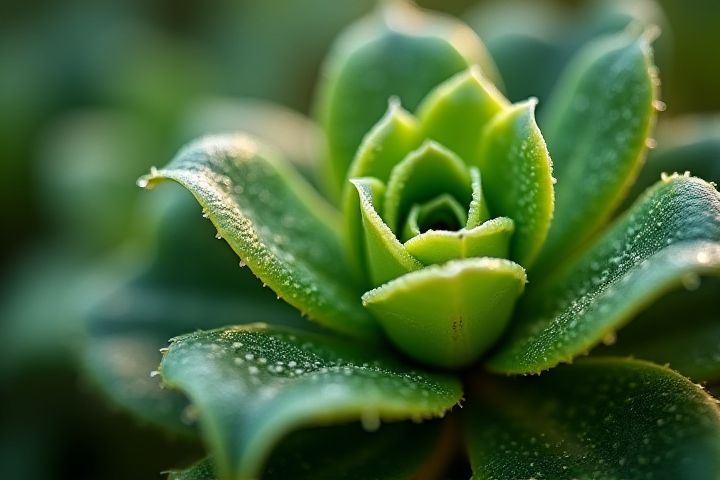
Houseplants often die due to improper care, which includes insufficient light, overwatering, or inadequate drainage. Excessive moisture can lead to root rot, a condition caused by fungal infections that thrive in damp soil. Conversely, insufficient light can hinder photosynthesis, stunting growth and weakening the plant. Pest infestations, such as spider mites or aphids, can also damage your plants by sucking nutrients from them. Regularly inspecting your plants and adjusting their environment can significantly improve their health and longevity.
Why Houseplants Die
Overwatering
Overwatering is a leading cause of houseplant demise, resulting in root rot, nutrient deficiency, and diminished oxygen supply. When soil retains excessive moisture, it creates an anaerobic environment that hinders root health, causing plants to wilt or develop yellowing leaves. Your watering routine should involve allowing the top inch of soil to dry out between waterings, catering to each plant's specific needs; for instance, succulents thrive with less frequent hydration compared to ferns. Monitoring drainage holes is essential, as blocked ones can exacerbate water retention, leading to increased plant stress and eventual death.
Underwatering
Underwatering is a leading cause of houseplant death, often resulting from infrequent watering schedules or neglect. When soil moisture levels drop below the plant's needs, roots can become dehydrated, leading to stunted growth and wilting. Signs of underwatering include yellowing leaves, dry leaf tips, and a lack of new growth. To ensure your plants thrive, it's important to check soil moisture regularly, typically aiming to water once the top inch of soil feels dry, depending on the specific requirements of each plant species.
Poor lighting
Poor lighting is a primary factor contributing to the decline and eventual death of houseplants. Each plant species has specific light requirements; for instance, succulents thrive in bright, direct light, while ferns prefer indirect light. When exposed to inadequate light, plants may exhibit signs of stress such as leggy growth, yellowing leaves, or stunted development. To ensure your houseplants thrive, it's essential to assess their light needs and position them accordingly, ensuring they receive adequate natural sunlight or supplemental grow lights when necessary.
Inadequate humidity
Inadequate humidity is a significant factor contributing to the decline of houseplants, particularly those native to tropical environments. Many common houseplants thrive in humidity levels of 40% to 60%, but indoor air often ranges between 20% to 30%, especially during winter months when heating systems are in use. Low humidity can lead to stress, which manifests as browning leaf tips, leaf drop, and stunted growth, ultimately compromising the plant's health. To maintain optimal humidity levels, consider using humidifiers, pebble trays, or grouping plants together to create a microclimate that fosters their well-being.
Pest infestations
Pest infestations are a common cause of houseplant death, directly impacting plant health and vigor. Aphids, spider mites, and mealybugs are notorious pests that can quickly multiply, often leading to leaf discoloration, stunted growth, and eventual death if left unchecked. Studies indicate that an infestation can reduce photosynthesis by as much as 40%, significantly affecting the plant's ability to thrive. Regularly inspecting your plants and implementing preventive measures can help protect your green companions from these harmful invaders.
Incorrect temperature
Incorrect temperature is a crucial factor in the health of houseplants, often leading to their decline. Most indoor plants thrive in specific temperature ranges, generally between 65degF to 75degF (18degC to 24degC). Exposure to extreme heat or cold can stress plants, resulting in wilting, leaf drop, or stunted growth. To ensure your houseplants flourish, maintain a stable environment, avoiding drafts and direct heat sources that can disrupt their natural growth cycle.
Lack of nutrients
Lack of nutrients is a primary reason for houseplant decline, as plants require essential elements like nitrogen, phosphorus, and potassium to thrive. When grown in nutrient-poor soil or not supplemented with fertilizers, plants may exhibit stunted growth, yellowing leaves, and overall poor health. Regularly checking soil quality and supplementing with organic or synthetic fertilizers can help restore vital nutrients. By prioritizing nutrient balance, you ensure your houseplants receive the necessary support to grow vibrantly.
Root rot
Root rot, a prevalent issue among houseplants, occurs when the roots become excessively saturated with water, leading to decay caused by fungal pathogens. Overwatering, poor drainage, and compacted soil create an environment conducive to root rot, preventing roots from absorbing vital nutrients and oxygen. Symptoms include wilting leaves, a foul odor from the soil, and dark, mushy roots. To prevent root rot, ensure your plant has proper drainage, use well-aerated soil, and only water when the top inch of soil feels dry.
Improper pot size
Improper pot size can lead to stunted growth or even death of houseplants due to inadequate root space. When a pot is too small, roots become congested, limiting their access to essential nutrients and water. Conversely, a pot that is excessively large can retain too much moisture, increasing the risk of root rot. Choosing the right pot size ensures healthy root development, promotes better drainage, and ultimately supports the overall vitality of your houseplants.
Chemical sensitivity
Houseplants often perish due to chemical sensitivity, primarily from toxic substances in fertilizers, pesticides, or herbicides. Approximately 75% of common houseplants exhibit varying levels of sensitivity to these chemicals, which can lead to leaf discoloration, stunted growth, or root damage. Over-fertilization, for instance, can introduce excess salts into the soil, disrupting water uptake and causing dehydration. Ensuring that your plants receive organic care and avoiding harsh chemicals can significantly improve their health and longevity.
